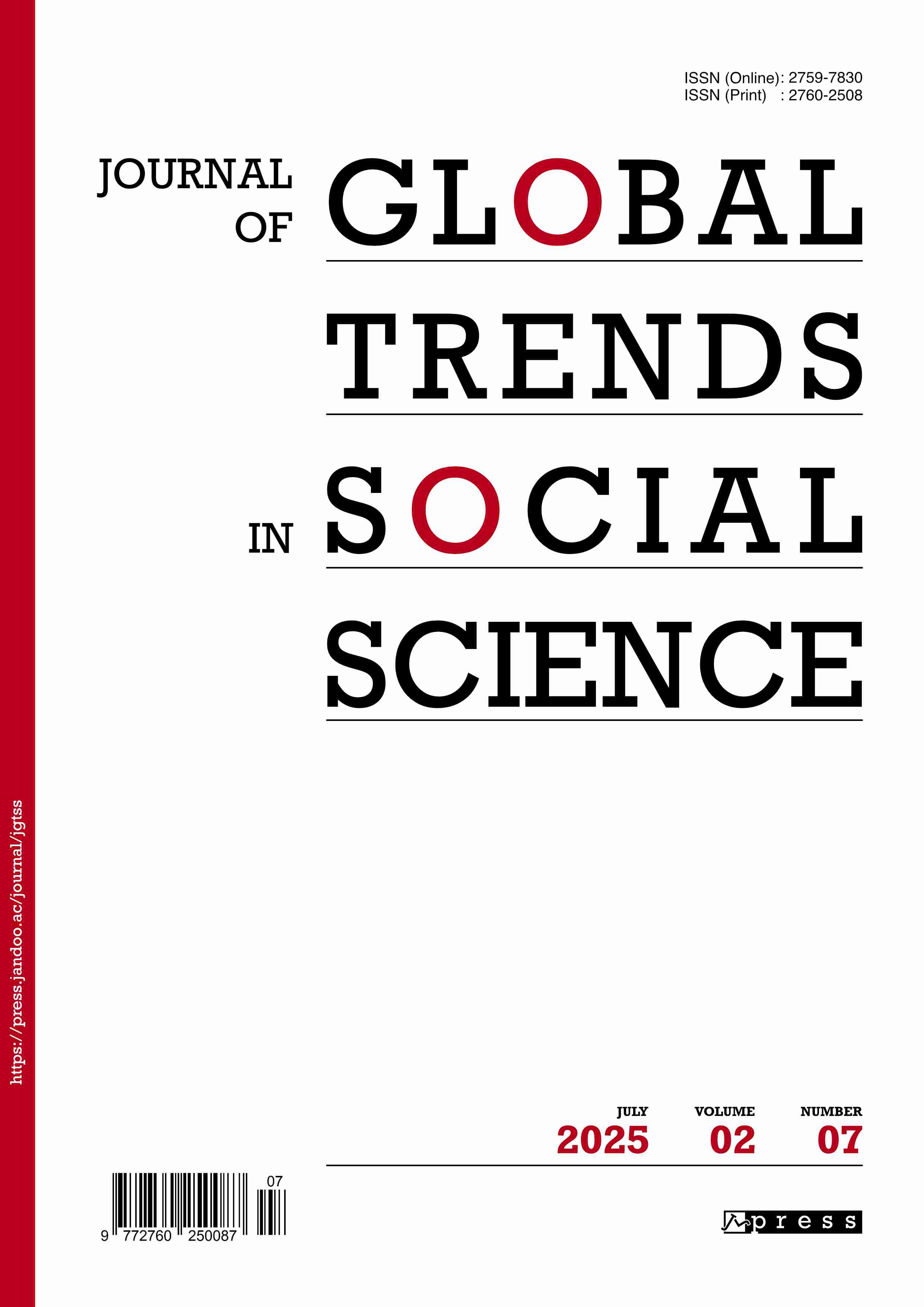Visualizing the Spatial Network of Cultural Heritage Based on Spatial Genes: A Case Study of Kulangsu, Xiamen

Abstract
Grounded in the theoretical framework of spatial genes, this study focuses on 51 core heritage elements of Kulangsu to explore multi-dimensional visualization approaches for the spatial network of cultural heritage. Through systematic analysis across four dimensions—construction period, architectural function, stylistic features, and spatial layout—time-series maps and spatial distribution maps were constructed. These maps reveal the characteristics of spatial genes underlying Kulangsu's evolution from an indigenous settlement to an international community. Combined with a "point-line-plane" hierarchical identification, a heritage spatial network structure encompassing historical, social, and cultural values was established and visualized to demonstrate its integrity and diversity. The research demonstrates that the identification of spatial genes and their multi-dimensional visualization of Kulangsu's core heritage elements can effectively elucidate its historical evolution and cultural significance. Future work requires continuous improvement in data precision enhancement, multi-stakeholder collaboration, and public participation mechanisms to enhance the scientific rigor and communicative efficacy of cultural heritage spatial representation, thereby better serving heritage conservation and revitalization practices.
Keywords
Spatial Gene, Cultural Heritage, Heritage Value, Spatial Network Visualization, Kulangsu
References
- Xie, Y., Yang, R., Liang, Y., Li, W., & Chen, F. (2022). The spatial relationship and evolution of world cultural heritage sites and neighbouring towns. Remote Sensing, 14(19), 4724.https://doi.org/10.3390/rs14194724 DOI: https://doi.org/10.3390/rs14194724
- Jones, S. (2017). Wrestling with the social value of heritage: Problems, dilemmas and opportunities. Journal of community archaeology & heritage, 4(1), 21-37.https://doi.org/10.1080/20518196.2016.1193996 DOI: https://doi.org/10.1080/20518196.2016.1193996
- Łaszkiewicz, E., Nowakowska, A., & Adamus, J. (2022). How valuable is architectural heritage? Evaluating a monument’s perceived value with the use of spatial order concept. SAGE Open, 12(4), 21582440221142720. DOI: https://doi.org/10.1177/21582440221142720
- Alonso González, P. (2014). From a given to a construct: Heritage as a commons. Cultural studies, 28(3), 359-390.https://doi.org/10.1080/09502386.2013.789067 DOI: https://doi.org/10.1080/09502386.2013.789067
- United Nations Educational, Scientific and Cultural Organization (UNESCO). (1972). Convention concerning the protection of the world cultural and natural heritage. https://whc.unesco.org/en/conventiontext/
- Suzuki, D. T., Griffiths, A. J., Miller, J. H., & Lewontin, R. C. (1986). An introduction to genetic analysis (No. Ed. 3, pp. x+-612pp).https://doi.org/full/10.5555/19870103297
- Holland, J. H. (1995). Hidden order. Business Week-Domestic Edition, 21, 93-136.
- Prigogine, I., & Stengers, I. (2018). Order out of chaos: Man's new dialogue with nature. Verso Books.
- Jin, D., Runqing, S., Wenlong, L., Jinhua, L., & Ying, J. (2022). Space Gene. China City Planning Review, 31(3).
- Duan, J., Shao, R., Lan, W., Liu, J., & Jiang, Y. (2019). Space gene. City Plan. Rev, 43, 14-21.
- Duan, J. (2023). Spatial gene inheritance: A new urban planning method connecting history and future. World Architecture, (10), 5–10, 4. https://doi.org/10.16414/j.wa.2023.10.003
- Zhang, W., & Yang, H. (2024). Quantitative research of traditional village morphology based on spatial genes: A case study of Shaanxi Province, China. Sustainability, 16(20), 9003. DOI: https://doi.org/10.3390/su16209003
- Xiang, H., Qin, Y., Xie, M., & Zhou, B. (2022). Study on the “space gene” diversity of traditional dong villages in the southwest Hunan province of China. Sustainability, 14(21), 14306.https://doi.org/10.3390/su142114306 DOI: https://doi.org/10.3390/su142114306
- Nie, Z., Li, N., Pan, W., Yang, Y., Chen, W., & Hong, C. (2022). Quantitative research on the form of traditional villages based on the space gene—A case study of Shibadong village in western Hunan, China. Sustainability, 14(14), 8965. https://doi.org/10.3390/su14148965 DOI: https://doi.org/10.3390/su14148965
- Tilden, F. (2009). Interpreting our heritage. ReadHowYouWant. com.
- Lan, W., Li, J., Wang, J., Wang, Y., & Lei, Z. (2025). Cultural Diversity Conservation in Historic Districts via Spatial-Gene Perspectives: The Small Wild Goose Pagoda District, Xi’an. Sustainability, 17(5), 2189. https://doi.org/10.3390/su17052189 DOI: https://doi.org/10.3390/su17052189
- Kulangsu World Cultural Heritage Monitoring and Management Centre. (2024). Gulangyu: World Cultural Heritage. https://www.glysyw.com/html/ycdt/
- Li, Y., Guo, J., Zhao, L., Chen, Y., Wang, C., & Li, J. (2021). Spatial evolution path of historical international community from the perspective of actor network: a case study of Kulangsu.https://doi.org/10.21203/rs.3.rs-779248/v1 DOI: https://doi.org/10.21203/rs.3.rs-779248/v1
- Li, Y., Ye, C., Wang, P., Yang, L., & Zhou, S. (2025). An interpretation of computational methods of time consciousness and symbolic space in photographic art in the age of digital imaging. Journal of Combinatorics, Mathematics and Combinatorial Computing, 127, 1477–1493. https://doi.org/10.61091/jcmcc127a-085 DOI: https://doi.org/10.61091/jcmcc127a-085
- Fu K, Ye C, Wang Z, Wu M, Liu Z and Yuan Y (2025) Ethical dilemmas and the reconstruction of subjectivity in digital mourning in the age of AI: an empirical study on the acceptance intentions of bereaved family members of cancer patients. Front. Digit. Health 7:1618169. doi: 10.3389/fdgth.2025.1618169 DOI: https://doi.org/10.3389/fdgth.2025.1618169
- Jing, W., Tingting, C., Wei, L., Chengguo, Z., & Xun, L. (2022). Deciphering Spatial Mixity in the Urban Evolution of Gulangyu: A Contextualized Analysis. China City Planning Review, 31(2).